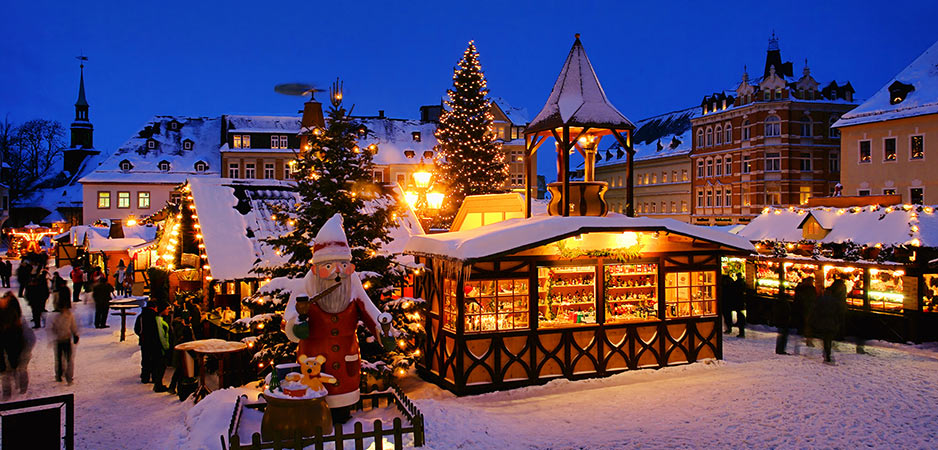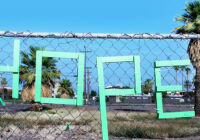Heinrich Heine is one of Germany’s most famous poets. He is best known for his poem, “Deutschland, ein Wintermärchen” (“Germany, a Winter’s Tale”) and for the first line of his poem “Nachtgedanken” (“Night Thoughts”), which has become what Germans call a “geflügeltes Wort,” a popular saying: “Denk ich an Deutschland in der Nacht, bin ich um den Schlaf gebracht” — “Thinking of Germany at night, just puts all thought of sleep to flight.”
Over the past several weeks, anyone who has been closely following how Germany has been dealing with the second wave of COVID-19 could see that it wasn’t going well — not very well at all. Winter in Germany, particularly before Christmas, is associated with Christmas markets, Glühwein (mulled wine), and Lebkuchen (gingerbread), preferably from Nuremberg. These days, the run-up to Christmas is associated with record numbers of COVID-19 infections, overburdened intensive care units, and political leaders not up to the challenge — and that is putting it kindly. Germany’s winter tale has turned into a nightmare, and anyone concerned about the country certainly has a hard time falling asleep.
The Perils of Federalism in Time of Pandemic
On December 11, Germany posted a record of new infections, close to 30,000 that day. At the same time, COVID-19-related deaths reached a new high. ICU staff sent out a cry for help, with capacity on the verge of reaching a tipping point if not already beyond. In the meantime, the country’s top political authorities were still engaged in heated debates about how best to deal with the looming crisis threatening the health care system, and this without turning into the Grinch who ruins Christmas for everybody.
How did we manage to get to this point? This is the question that Germany’s major news outlets have been asking for the past several weeks. The answer? Vielschichtig — multi-layered — as we like to say in German when we are unsure and don’t want to offend anybody.
Certain Facts
There are, however, certain facts. Like elsewhere in Western Europe, during the summer months, when infection rates were way down, the government largely neglected to take the necessary precautions to prepare for the fall. And this in a country where children routinely learn La Fontaine’s fable of the ant and the cricket. Apparently, German authorities failed to take the moral of the tale to heart — a fatal mistake.
Germany counts around 25 million inhabitants who fall in the “especially at risk” category. This has a lot to do with the fact that Germany is an aging society, with a relatively skewed age pyramid where a growing number of seniors confront a declining number of young people. According to official statistics, almost 90% of those who have so far died of COVID-19-related complications were older than 69 at the time of their death; around 40% were between 80 and 89. Against that, among those under 50, the death rate was roughly 1%. Yet, once again, German authorities proved rather insouciant. As the prominent news magazine Der Spiegel has put it, German authorities missed the opportunity during the summer to develop innovative measures to protect the country’s seniors and save lives.
Once the weather turned cold in late October, the rate of new infections started to surge. Toward the end of the month, new infections were quickly approaching the 20,000 mark, with daily increases of more than 70% compared to the previous week. In response, federal and Länder political leaders reached a consensus, promoted as “shutdown light,” starting in early November. This entailed the closing of restaurants, hotels, museums, cinemas, sports stadiums, bars and cafes, saunas and fitness centers. The idea was that a relatively short lockdown would “break” the second wave and allow Germans to go on with their lives and celebrate a relatively “normal” Christmas.
The idea drew inspiration from British researchers who proposed “limited duration circuit breaks” as a means to control the spread of the virus. The strategy was supposed to feed two birds with one scone. As the researchers put it, these “’precautionary breaks’ may offer a means of keeping control of the epidemic, while their fixed duration and the forewarning may limit their society impact.”
Germany’s political authorities were enthusiastic. A leading proponent of stringent measures to combat the virus went so far as to hail the strategy a “milestone” that would break the second wave “as if straight from the textbook.” Chancellor Angela Merkel expressed her confidence that the strategy would allow Germany to return to a limited modicum of normalcy in December. In hindsight, this proved to be the arguably “biggest political miscalculation of the year,” as the lead article in Der Spiegel puts it in the most recent print edition.
In any case, it was a big flop. “Shutdown light” did little to reverse the infection rate. On the contrary, in a number of Länder, among them Saxony and Bavaria, it actually rose. By the beginning of December, the virus was out of control, and Germany’s top political leaders had to admit that they had underestimated it.
The German Model
COVID-19 has brutally exposed the limits, weaknesses and shortcomings of the German model. That includes the country’s federal structure. In Germany, the protection against infections is to a large extent in the hands of the Länder, which jealously guard their relative autonomy. This means that during this pandemic, virtually every state has followed its own rules, some strict, some not so. In Bavaria, for instance, which has always prided itself in its laissez-faire approach of “Leben und leben lassen” — “live and let live” — authorities were relatively lenient when it came to the public consumption of alcohol, until “live and let live” turned into “live and let die.” In response, in early December, the Bavarian government issued a general ban on the outdoor sale of alcohol.
Germany is certainly not alone in discovering the pitfalls of federalism in an intense crisis situation. Switzerland has had similar experiences when it comes to implementing protective measures against the virus, with equally dramatic consequences. Where Germany’s shortcomings are particularly conspicuous is with respect to the level of technological preparedness.
This is especially glaring with regard to digitalization. It is revealing that in April, a leading representative of Germany’s digital economy noted that COVID-19 was a “wake-up call to massively accelerate digitalization.” Eight months later, Germany was still snoozing, seriously hampering serious efforts to deal with the pandemic. As a recent article noted, most local public health departments are still relying on phones and fax machines to inform people that they had been in contact with somebody infected with COVID-19.
Under the circumstances, contact tracing is difficult. To be sure, Germany has the Corona-Warn-App that has been around since June. It should have come much earlier, but technical problems and concerns about privacy delayed the launch. Once it was ready to download, it proved suboptimal. One reason was that most hospitals and other labs could not be connected to the app. As the head of one of Germany’s largest hospital laboratories admitted in October, his lab lacked the devices that would allow him to scan COVID-19 test results.
Or take the case of distance learning. At the beginning of the pandemic, when schools closed their doors throughout the country, Germany’s public state-owned international broadcaster, Deutsche Welle, noted that there was “hardly any country in Europe as ill-prepared for e-learning as Germany.” According to EU data, only a third of German schools were prepared for the lockdown. In the meantime, digital progress has been slow and met with significant resistance, the result of widespread skepticism toward digital learning.
Rude Awakening
With COVID-19, Germany is paying the price for years of negligence with respect to new technologies. As so often, in the face of rapid technological innovation and progress, Germany banked on its traditional strengths, improving core sectors such as automobiles, instead of investing in the future. In the process, it fell behind its international competitors. While American and Chines universities turn out thousands of IT specialists, in Germany, the education sector suffers from “financial problems, a lack of digital concepts and a lack of digital competence.” As the head of the German Association of Industry put it several years ago, when it comes to new technologies, Germany is a “Schnarchland” — a country snoring away.
The pandemic has provoked a rude awakening. A few days ago, the German government, confronted with a runaway infection rate, pulled the emergency brake, ordering a hard lockdown over the holiday season and into the new year. In German, we have a word, “Spassbremse,” — a brake on any kind of fun. If there has ever been a publicly-ordered Spassbremse, this is it. Among other things, the new measures ban public gatherings and fireworks on New Year’s Eve. Whoever has had the opportunity to visit Berlin over New Year’s will understand what this means: tote Hose (dead pants), as we like to say in German.
There can be no doubt that these measures will put a huge damper on the holiday spirit. Remarkably enough, Germans appear to be rather sanguine. In fact, a survey from early December found that roughly half of respondents wanted tougher measures. Only 13% thought they were exaggerated, with support for tougher measures almost 20% higher than in October. What this suggests is that the problem in Germany is not with the public but with the political establishment, which over the course of this pandemic has failed on numerous occasions to step up to the challenge. And yet, in a recent representative survey, three-quarters of respondents expressed satisfaction with Angela Merkel while two-thirds said they were happy with the governing coalition. Well then, merry Christmas, everyone.
The views expressed in this article are the author’s own and do not necessarily reflect Fair Observer’s editorial policy.
Support Fair Observer
We rely on your support for our independence, diversity and quality.
For more than 10 years, Fair Observer has been free, fair and independent. No billionaire owns us, no advertisers control us. We are a reader-supported nonprofit. Unlike many other publications, we keep our content free for readers regardless of where they live or whether they can afford to pay. We have no paywalls and no ads.
In the post-truth era of fake news, echo chambers and filter bubbles, we publish a plurality of perspectives from around the world. Anyone can publish with us, but everyone goes through a rigorous editorial process. So, you get fact-checked, well-reasoned content instead of noise.
We publish 2,500+ voices from 90+ countries. We also conduct education and training programs
on subjects ranging from digital media and journalism to writing and critical thinking. This
doesn’t come cheap. Servers, editors, trainers and web developers cost
money.
Please consider supporting us on a regular basis as a recurring donor or a
sustaining member.
Will you support FO’s journalism?
We rely on your support for our independence, diversity and quality.






